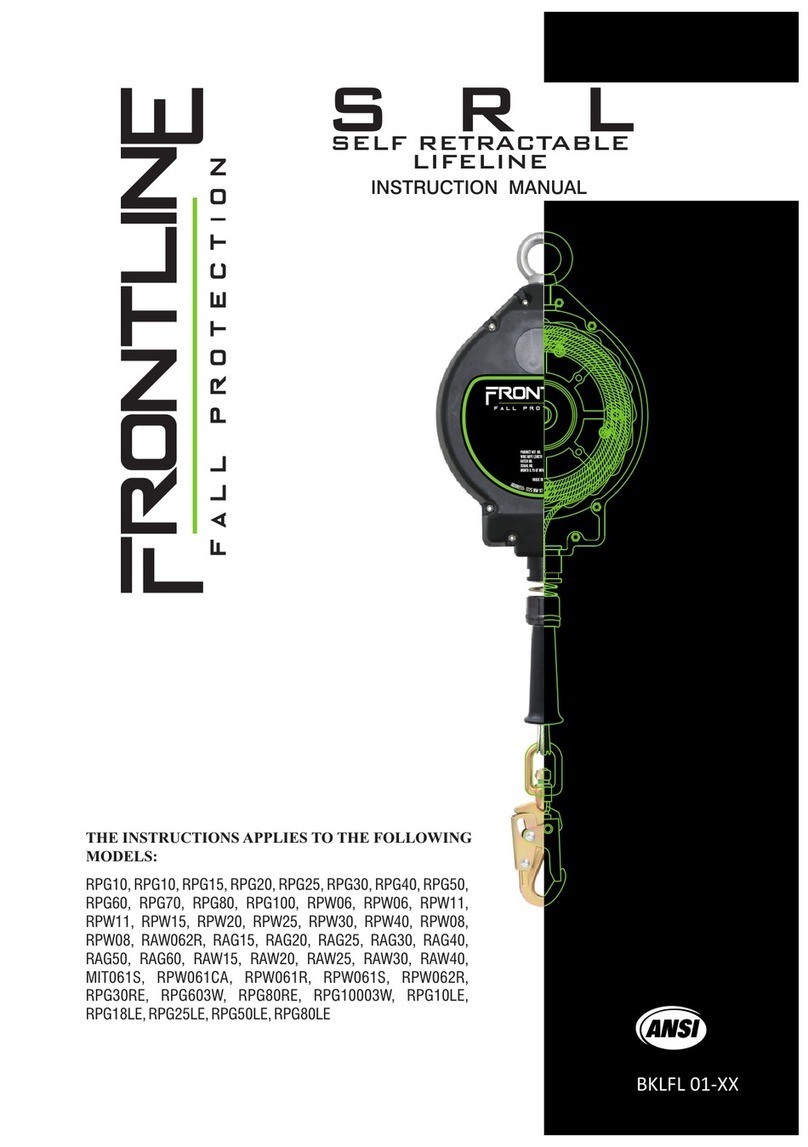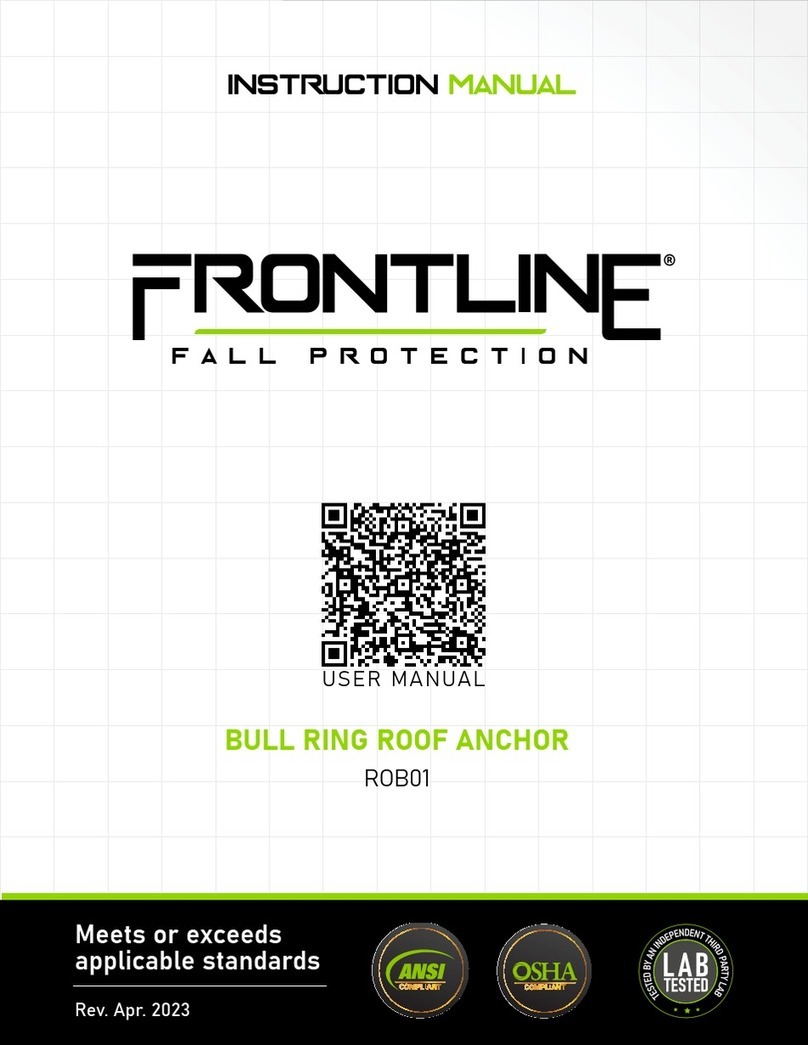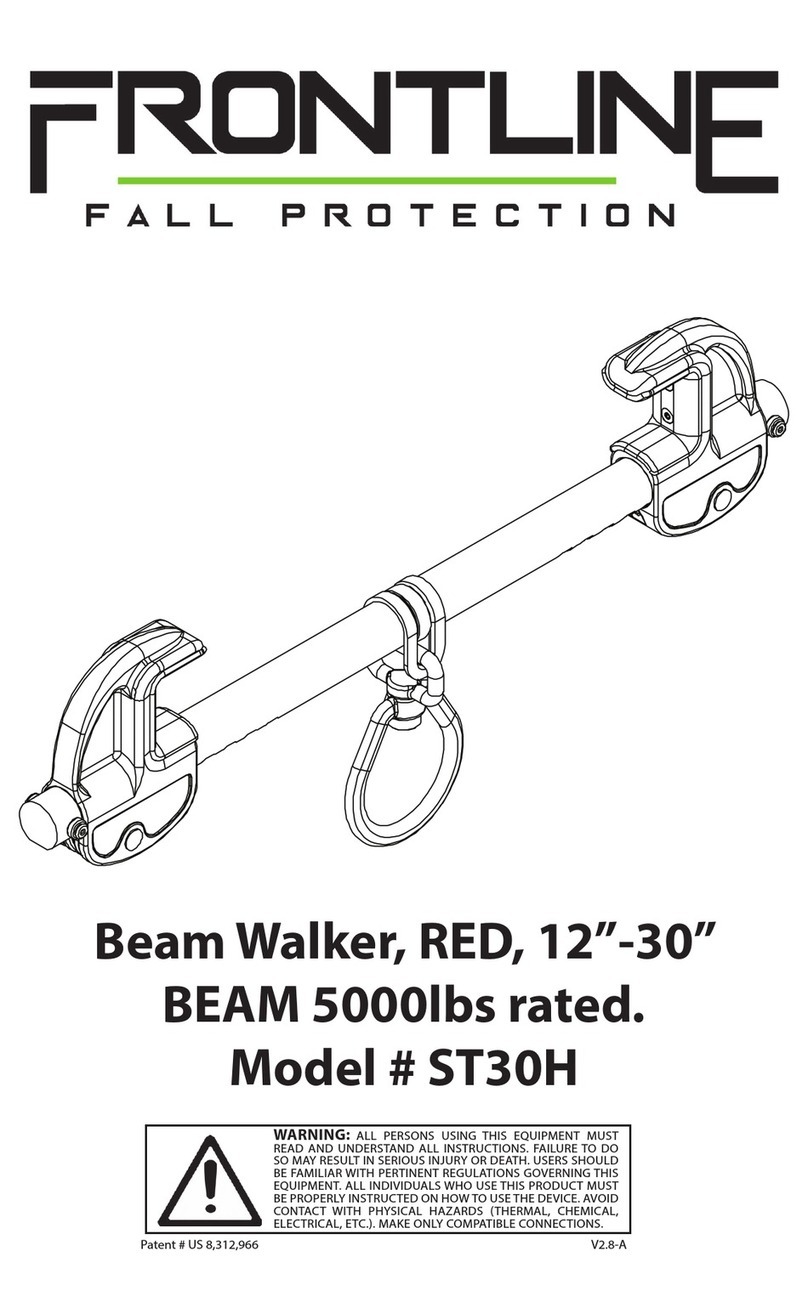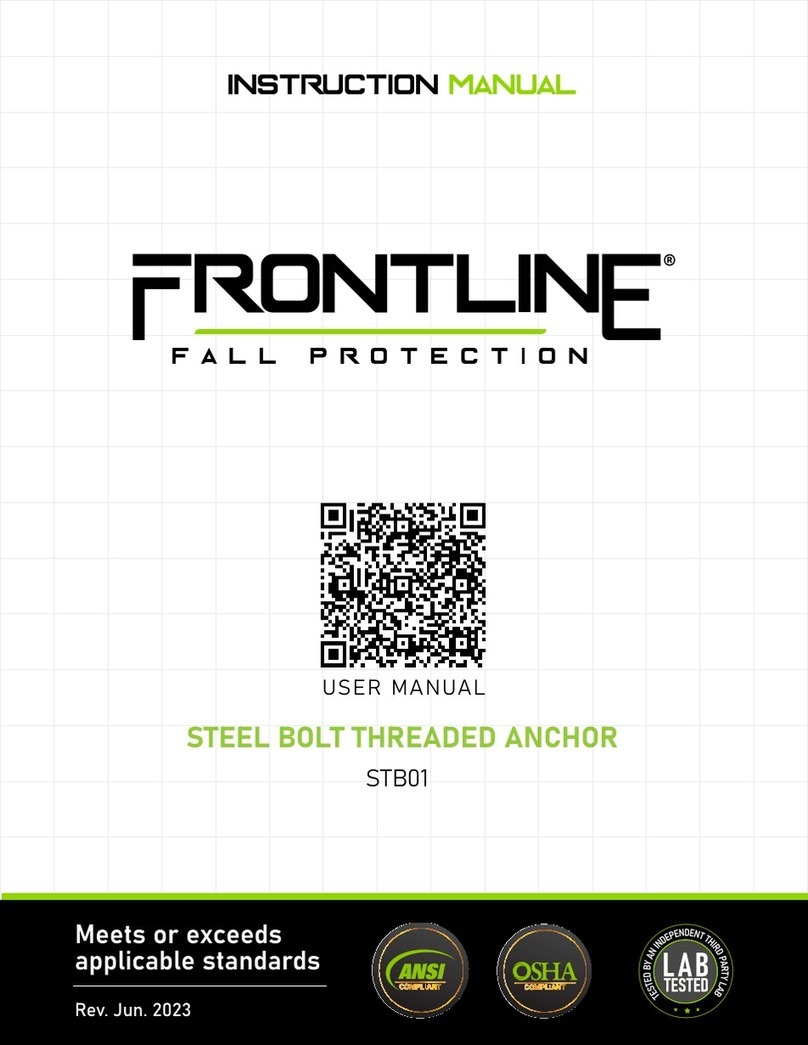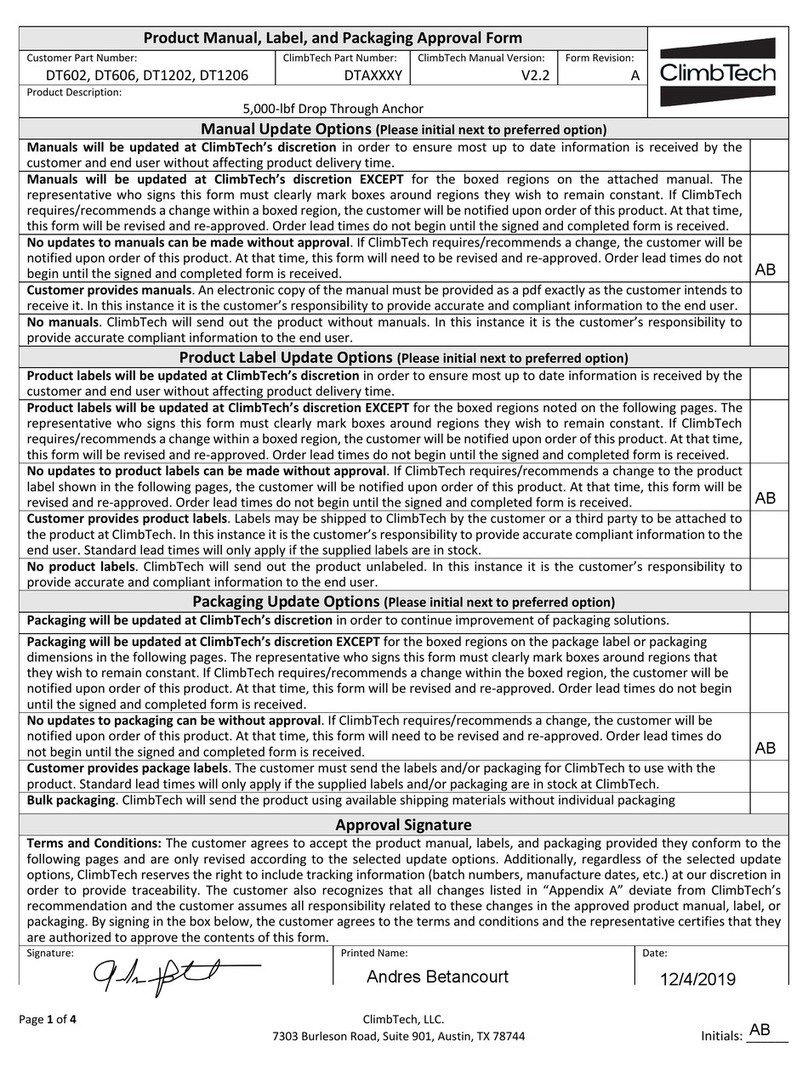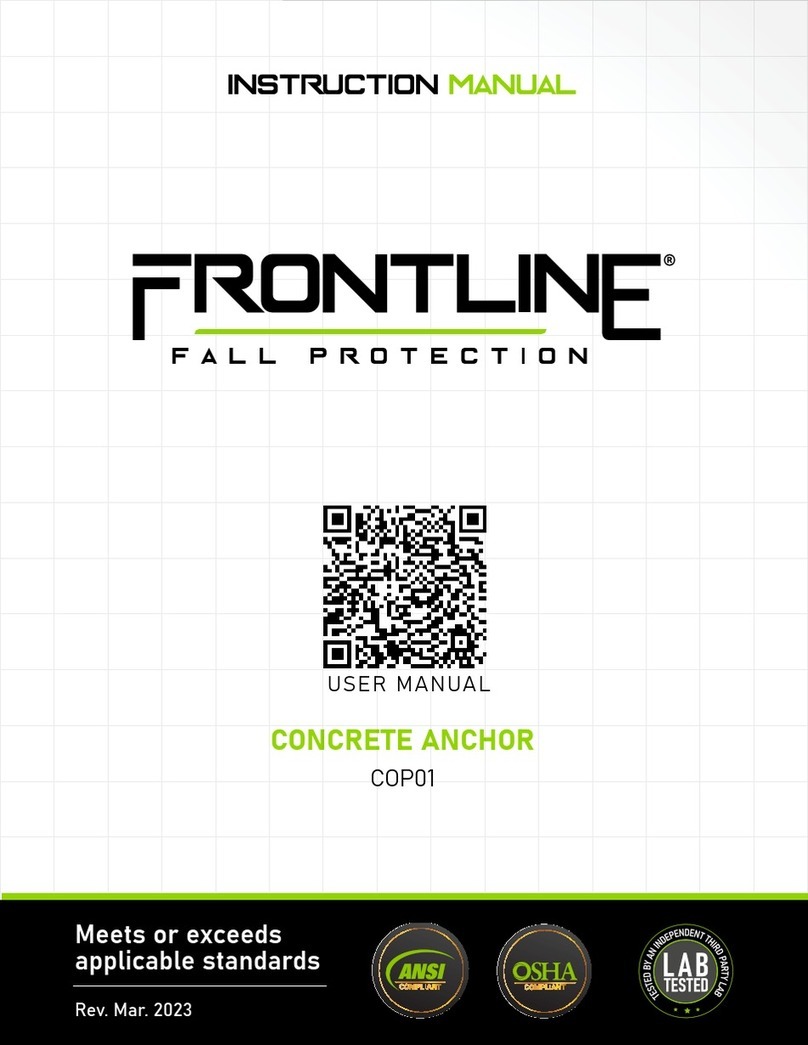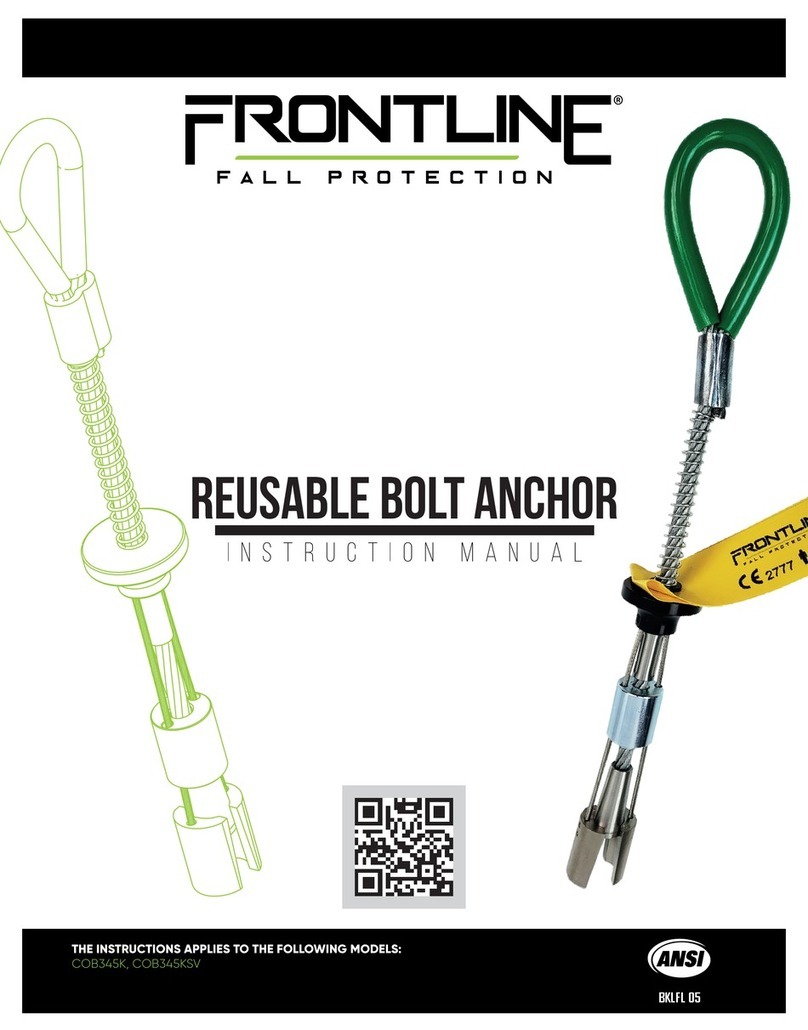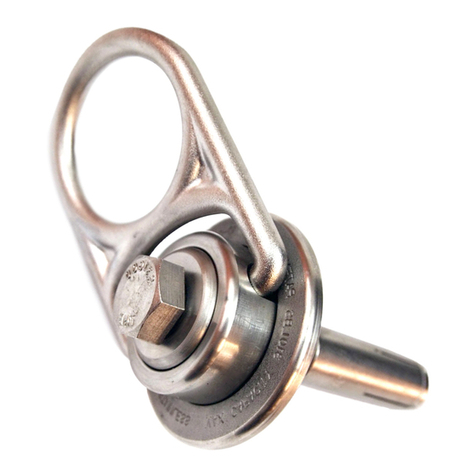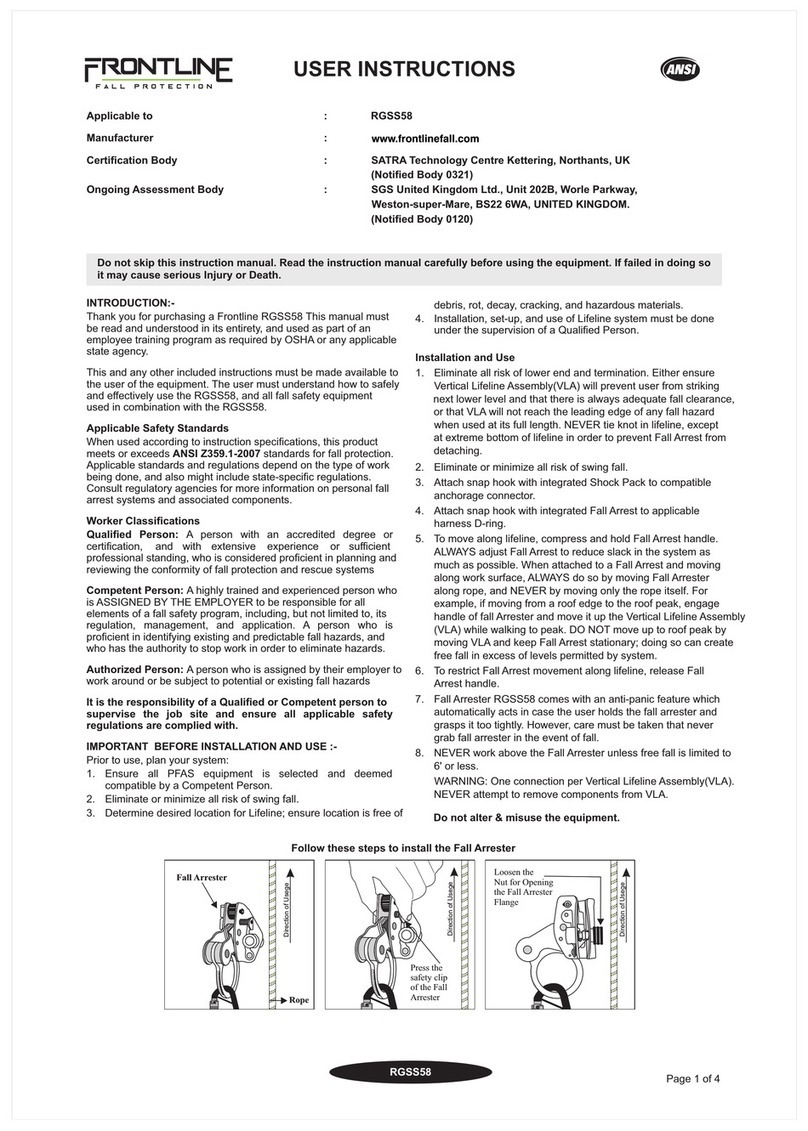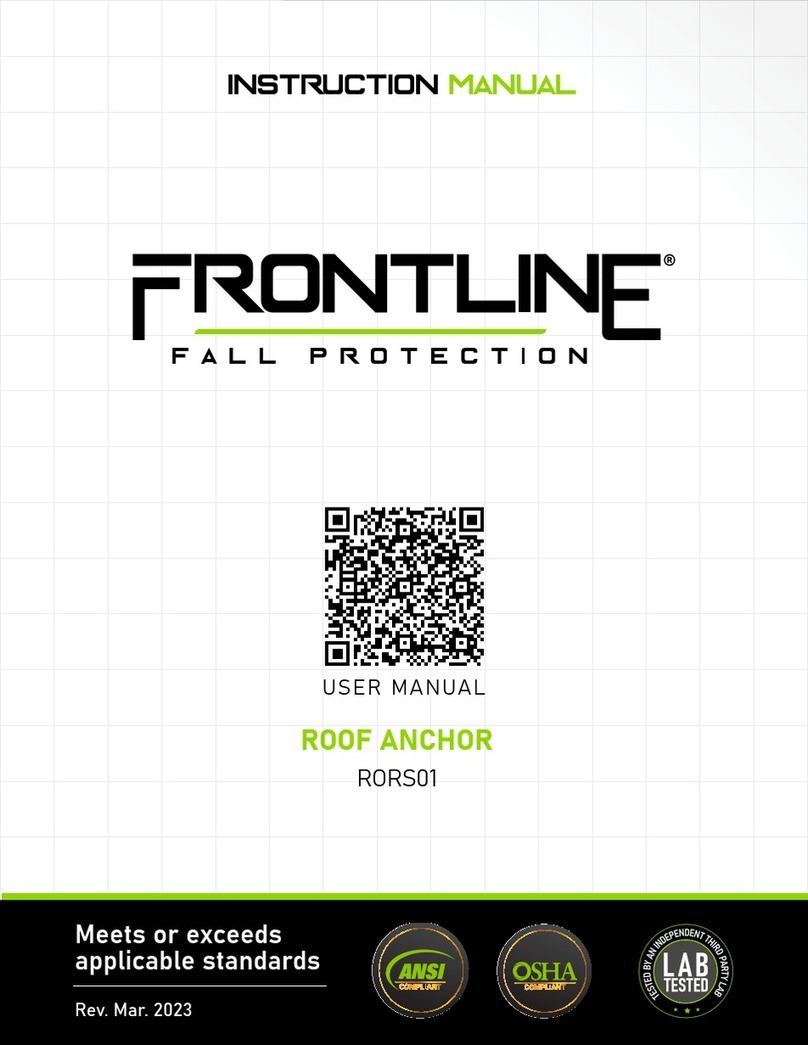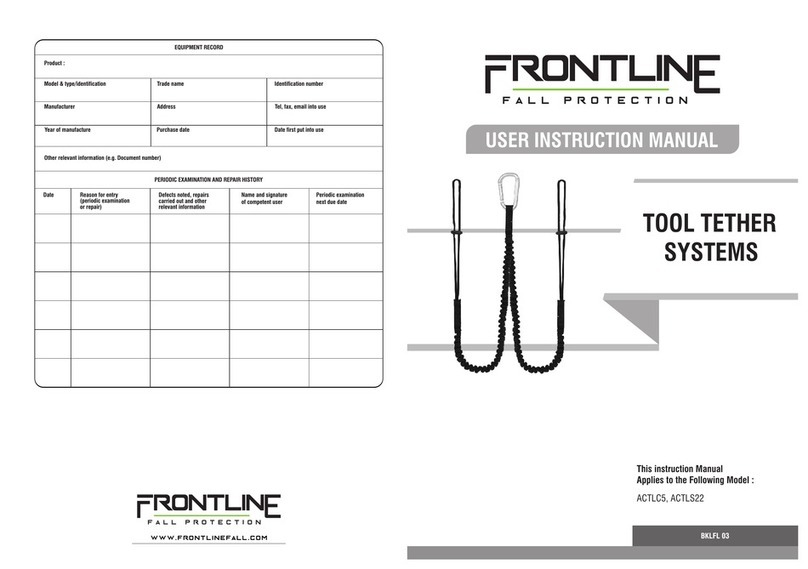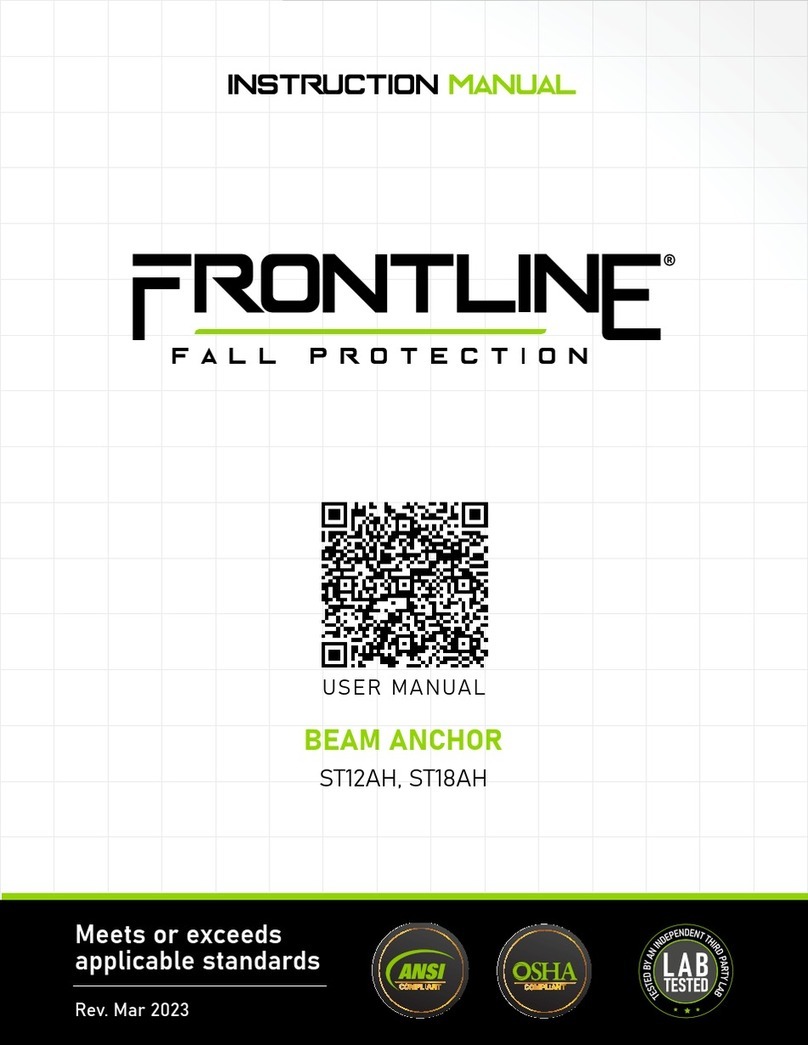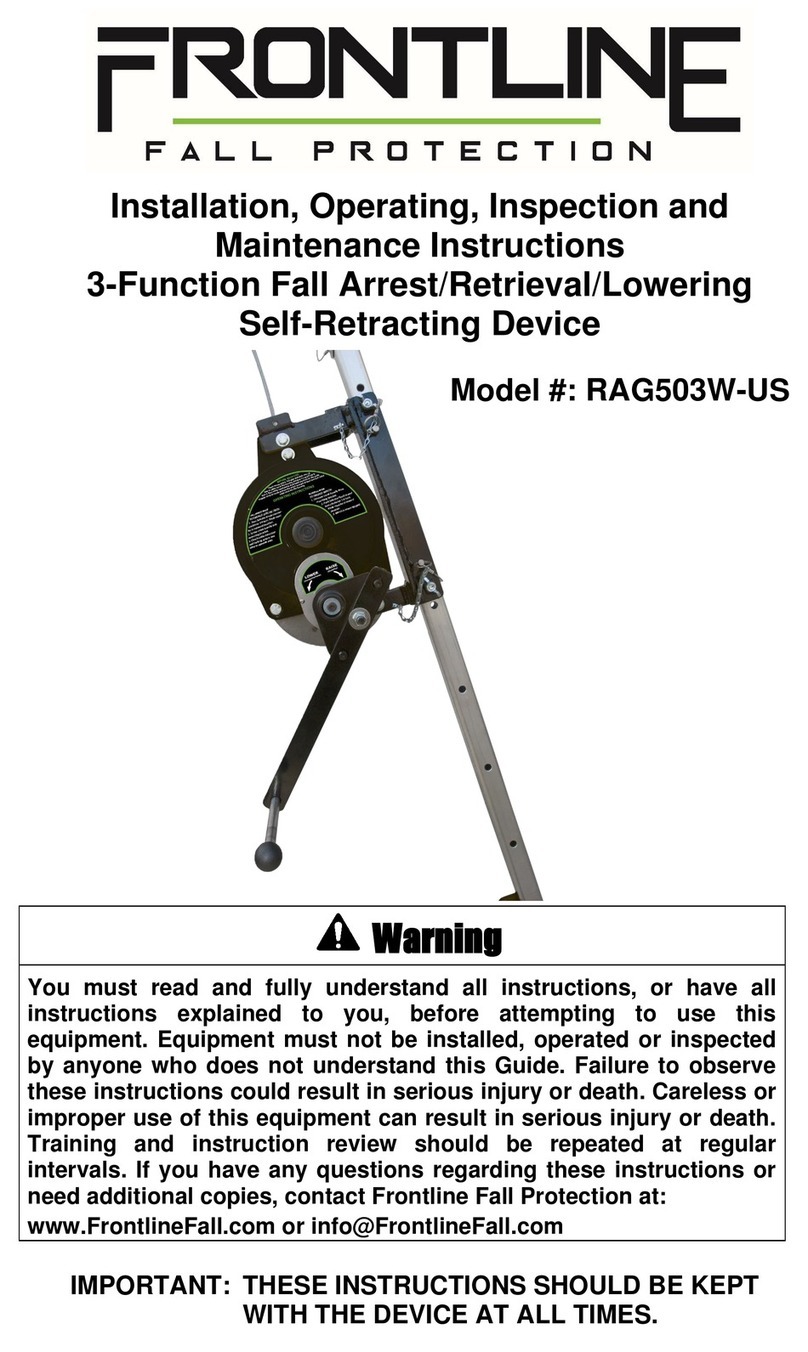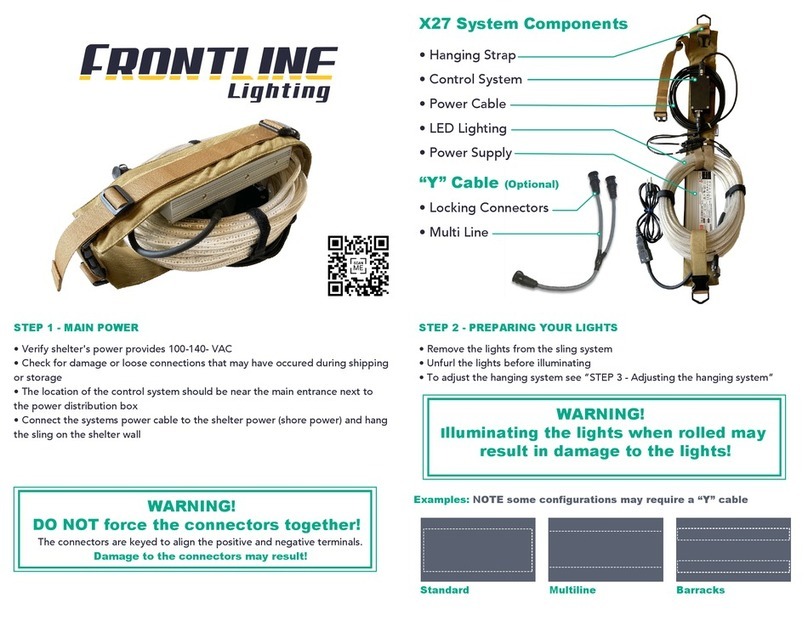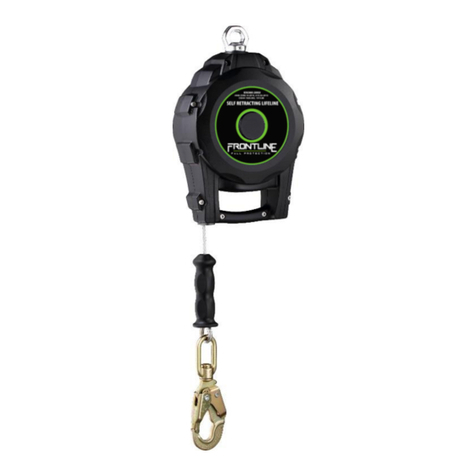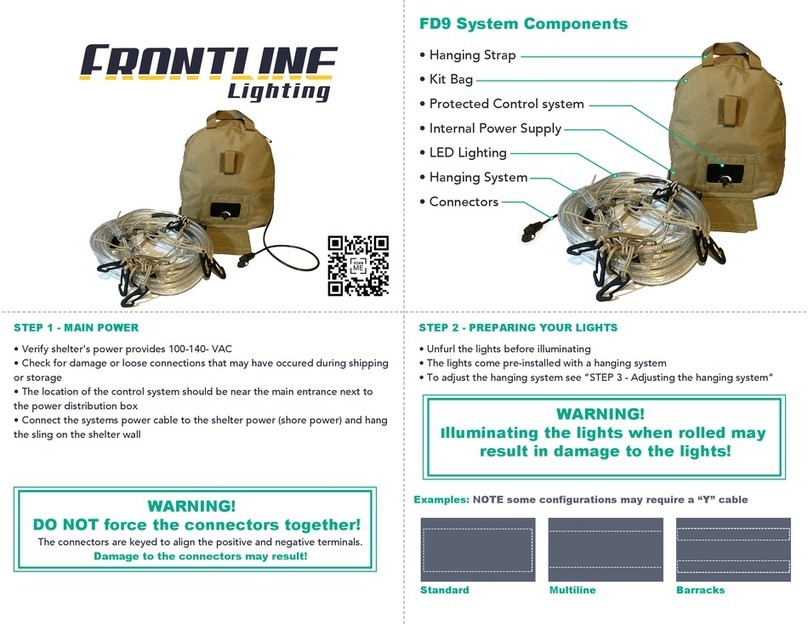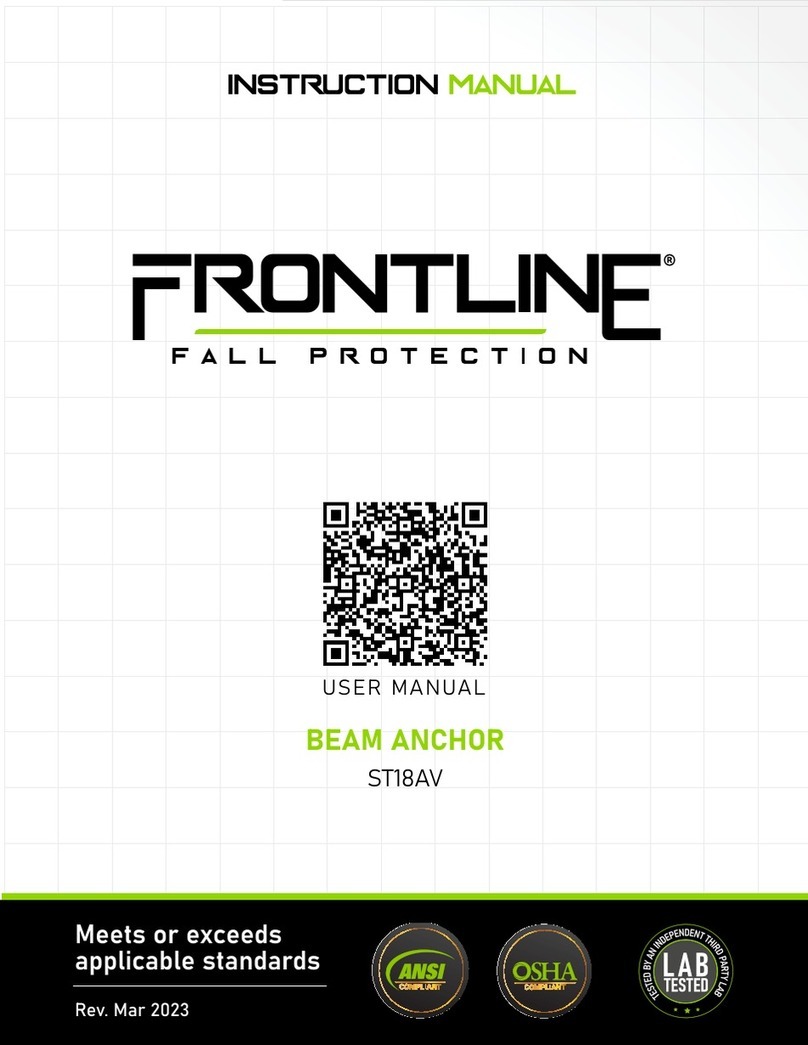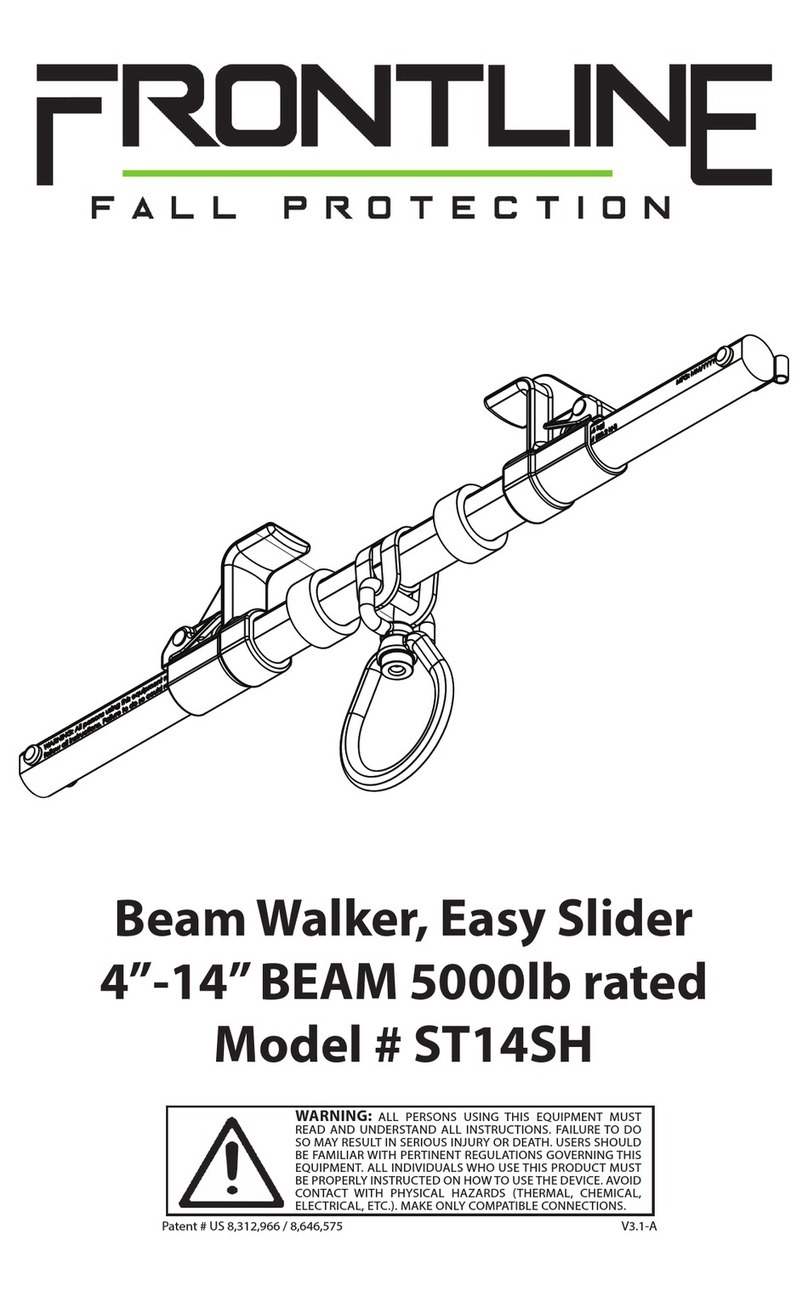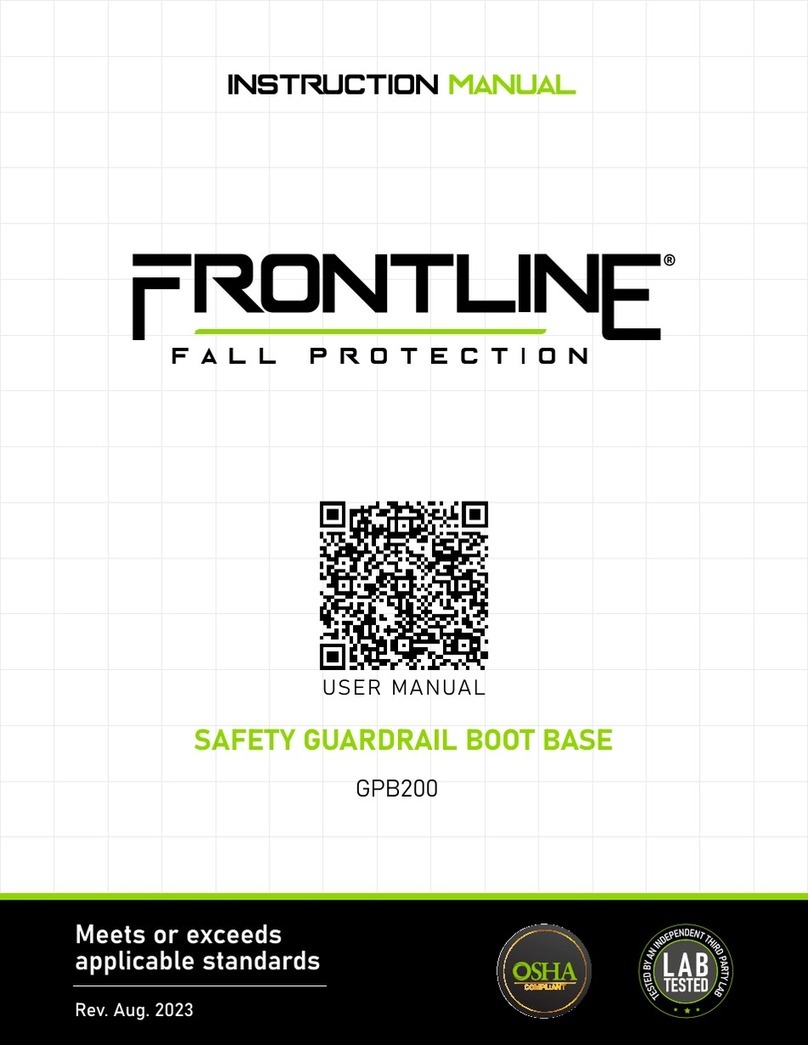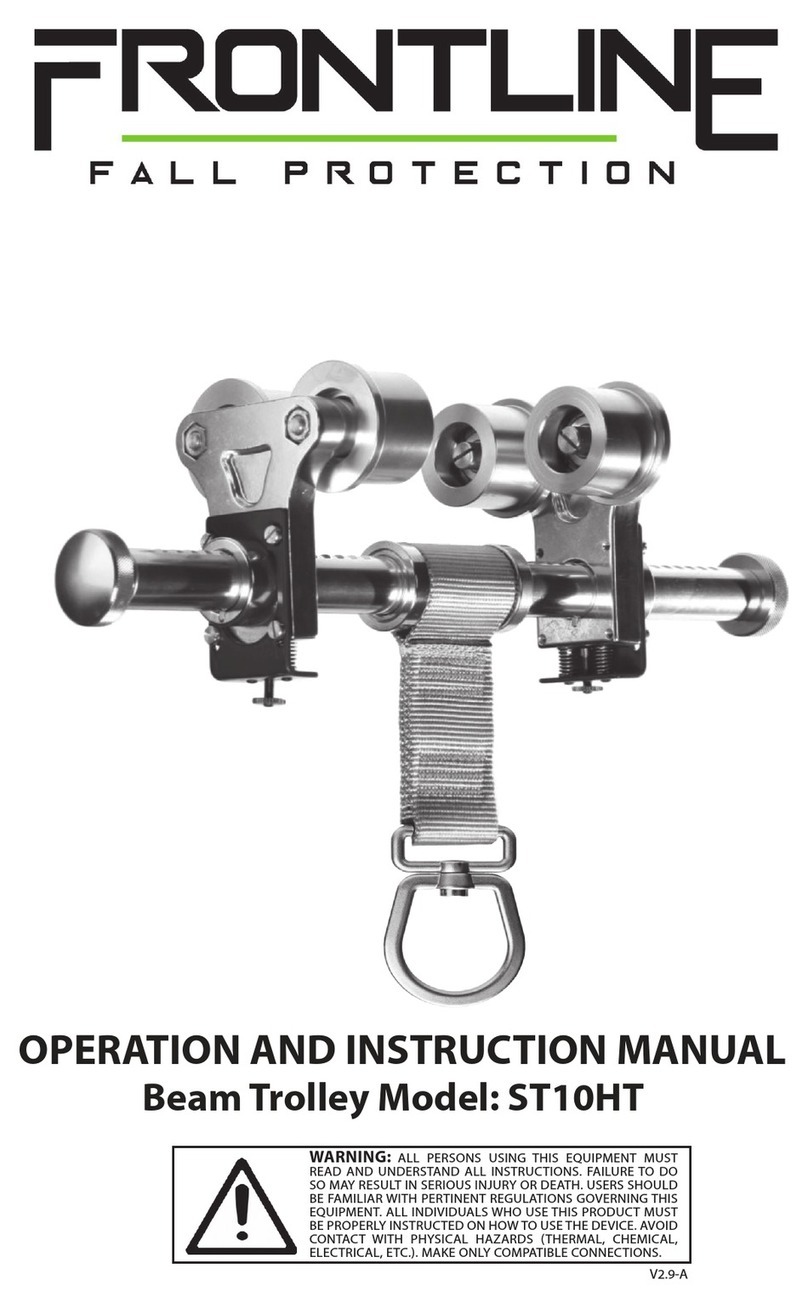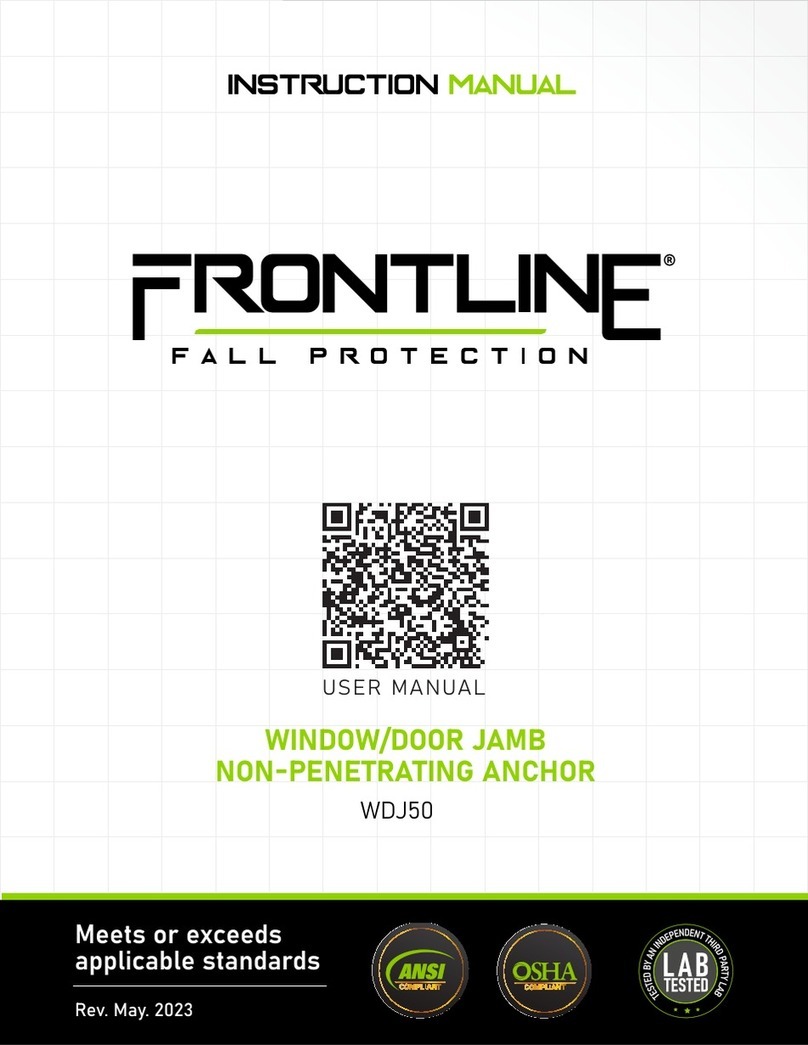
2777
Reusable Bolt Anchor
5,000-lbf / 22kN
Model: COB345K
Assembled in the USA
V3.0-A
INSPECTION AND MAINTENANCE LOG
Part Number
MODEL NUMBER:
DATE OF MANUFACTURE:
Comments Inspector Name
Inspection:
Ocial periodic inspection must be made at least annually. The inspection must be
performed by a qualied person other than the intended user. If severe weather or
conditions exist then inspections must be carried out more frequently. All inspection
results must be logged in the space provided above.
1. Inspect unit for visible signs of damage or wear that could aect operation. For
example: kinked or frayed cables.
2. Make sure all labeling is axed to the unit.
3. Check spoons and end termination operate smoothly with no metal burrs.
4. When reusing a previously drilled hole, inspect for debris or wallowing.
5. Record inspection results in the space provide above.
* If any damage that could aect the strength or operation of the device,
or unsafe conditions are found, proper disposal is required. The anchorage
connector must be rendered unusable and then properly discarded.
Product Warranty, Limited Remedy and Limitation of Liability
WARRANTY: THE FOLLOWING IS MADE IN LIEU OF ALL WARRANTIES
OR CONDITIONS, EXPRESS OR IMPLIED, INCLUDING THE IMPLIED
WARRANTIES OR CONDITIONS OF MERCHANTABILITY OR FITNESS
FOR A PARTICULAR PURPOSE. Equipment oered by Frontline Fall
Protection is warranted against factory defects in workmanship and
materials for a period of one year from date of purchase.
LIMITED REMEDY: Upon notice in writing, Frontline Fall Protection
will repair or replace all defective items at Frontline Fall Protection’s
sole discretion. Frontline Fall Protection reserves the right to require
that the defective item be returned to its plant for inspection before
determining the appropriate course of action. Warranty does not cover
equipment damage resulting from wear, abuse, damage in transit,
failure to maintain the product or other damage beyond the control of
Frontline Fall Protection. Frontline Fall Protection shall be the sole judge
of product condition and warranty options. This warranty applies only
to original purchaser and is the only warranty applicable to this product.
Please contact Frontline Fall Protection technical service department for
assistance.
LIMITATION OF LIABILITY: IN NO EVENT WILL FRONTLINE FALL
PROTECTION BE LIABLE FOR ANY INDIRECT, INCIDENTAL, SPECIAL
OR CONSEQUENTIAL DAMAGES INCLUDING, BUT NOT LIMITED
TO, LOSS OF PROFITS, IN ANY WAY RELATED TO THE PRODUCTS
REGARDLESS OF THE LEGAL THEORY ASSERTED.
Date
ALL PERSONS USING THIS EQUIPMENT MUST
READ AND UNDERSTAND ALL INSTRUCTIONS. FAILURE TO DO
SO MAY RESULT IN SERIOUS INJURY OR DEATH. USERS SHOULD
BE FAMILIAR WITH PERTINENT REGULATIONS GOVERNING THIS
EQUIPMENT. ALL INDIVIDUALS WHO USE THIS PRODUCT MUST
BE PROPERLY INSTRUCTED ON HOW TO USE THE DEVICE. AVOID
CONTACT WITH PHYSICAL HAZARDS (THERMAL, CHEMICAL,
ELECTRICAL, ETC.). MAKE ONLY COMPATIBLE CONNECTIONS.
Patent # US 7,357,363 / 7,011,281 / 6,729,821
Notied Body responsible for the EC type examination and ongoing
conformity:
SATRA Technology Europe Ltd.
Bracetown Business Park
Clonee
Dublin D15 YN2P
Ireland
Tel: +353 (0)1 437 2484
Frontline Fall Protection
2023 NW 84th AVE
Miami, FL 33122
info@frontlinefall.com / www.frontlinefall.com
User Instructions must always be available to the user and are not to be removed except by the user of this equipment. For proper use, see
supervisor, User Instructions, or contact the manufacturer.
Compliant fall protection and emergency rescue systems help prevent serious injury during fall arrest. Users and purchasers of this equipment
must read and understand the User Instructions provided for correct use and care of this product. All users of this equipment must understand the
instructions, operation, limitations and consequences of improper use of this equipment and be properly trained prior to use per OSHA 29 CFR
1910.66 and 1926.503 or applicable local standards.
Misuse or failure to follow warnings and instructions may result in serious personal injury or death.
PURPOSE
The COB345K is an anchorage connector designed to function as an interface between the anchorage and a fall protection, work positioning, rope
access, or rescue system for the purpose of coupling the system to the anchorage. Any references to “anchorage connector” in this manual include,
and apply to, the COB345K.
USE INSTRUCTIONS
1. A user must be of sound mind and body to properly and safely use this equipment in normal and emergency situations. Users
must have a physician ensure they are clear of any medical conditions that may aect the proper and safe use of this equipment
in normal and emergency situations.
2. Before using a personal fall arrest system, user must be trained in accordance with the requirements of OSHA 29 CFR 1910.66 in
the safe use of the system and its components.
3. Use only with ANSI/OSHA compliant personal fall arrest or restraint systems. The anchorage must have the strength capable
of supporting a static load, applied in the directions permitted by the system, of at least 5,000-lbf (22kN) in the absence of
certication.
4. The user shall be equipped with a means of limiting the maximum dynamic forces exerted on the user during the arrest of a fall
to a maximum of 8 kN (1800-lbf). In the EU these forces must be limited to 6 kN (1350-lbf).
5. Use of this product must be approved by an engineer or other qualied person to be compatible with any and all structural
& operational characteristics of the selected installation location and system to be connected to this anchorage connector.
6. The anchorage connector must be inspected prior to each use for wear, damage, and other deterioration. If defective
components are found, the anchorage connector must be immediately removed from service in accordance with the
requirements of OSHA 29 CFR 1910.66 and 1926.502.
7. The anchorage connector should be positioned in such a way that minimizes the potential for falls and the potential fall distance
during use. The complete fall protection system must be planned (including all components, calculating fall clearance, and
swing fall) before using.
8. A rescue plan, and the means at hand to implement it, must be in place that provides the prompt rescue of users in the event of
a fall, or assures that users are able to rescue themselves.
9. After a fall occurs, the anchorage connector must be removed from service and destroyed immediately.
USE LIMITATIONS: The anchorage connector shall not be used outside its limitations, or for any purpose other than that for which it is
intended.
1. The anchorage connector is designed for single user, with a capacity up to 310 lbs (140 kg) including
clothing, tools, etc.
2. The anchorage connector may be pulled in any direction shown in the PROPER LOADING diagram.
3. The anchorage connector is designed to be used in temperatures ranging from -40ºF to +130ºF (-40°C to +54°C).
4. Do not expose the anchorage connector to chemicals or harsh solutions which may have a harmful eect.
5. Do not alter or modify this product in any way.
6. Caution must be taken when using any component of a fall protection, work positioning, rope access, or rescue system near
moving machinery, electrical hazards, sharp edges, or abrasive surfaces, as contact may cause equipment failure, personal
injury, or death.
7. Do not use/install equipment without proper training by a “competent person” as defined by OSHA 29 CFR 1926.32(f).
8. Do not remove the labeling from this product.
9. Additional requirements and limitations may apply depending on anchorage type and fastening option utilized for installation.
All placements must be approved by an engineer or other qualied person.
10. This anchorage connector should not be used as part of a horizontal lifeline system that has not been designed and or
approved to be used with 5,000-lbf anchorage connectors.
11. The anchorage connector should only be used for personal fall protection and not for lifting equipment.
COMPATIBILITY LIMITATIONS
Anchorage connector must only be coupled to compatible connectors. OSHA 29 CFR 1926.502 prohibits snaphooks from being engaged to certain
objects unless two requirements are met: it must be a locking type snaphook, and it must be “designed for” making such a connection. “Designed
for” means that the manufacturer of the snaphook specically designed the snaphook to be used to connect to the equipment listed. The following
connections must be avoided, because they can result in rollout* when a nonlocking snaphook is used:
• Direct connection of a snaphook to horizontal lifeline.
• Two (or more) snaphooks connected to one D-ring.
• Two snaphooks connected to each other.
• A snaphook connected back on its integral lanyard.
• A snaphook connected to a webbing loop or webbing lanyard.
• Improper dimensions of the D-ring, rebar, or other connection point in relation to the snaphook dimensions that would allow the
snaphook keeper to be depressed by a turning motion of the snaphook.
*Rollout: A process by which a snaphook or carabiner unintentionally disengages from another connector or object to which it is
coupled. (ANSI Z359.0-2007)
MAINTENANCE, CLEANING AND STORAGE
Cleaning periodically will prolong the life and proper functioning of the product. The frequency of cleaning should be determined by inspection and
by severity of the environment. Clean with compressed air and/or a sti brush using plain water or a mild soap and water solution. Do not use any
corrosive chemicals that could damage the product. Wipe all surfaces with a clean, dry cloth and hang to dry, or use compressed air. When not in use,
store anchorage connectors in a cool, dry, clean environment, out of direct sunlight and free of corrosive or other degrading elements.
Read This Instruction Manual Carefully Before Using This Equipment.
